(It’s been a while since I went back and looked at this older piece of writing on my painting method. I re-read it recently and it still holds true; it covers a lot of important ground so I am sending it out here. I recently had some people inquire if I still taught classes. I don’t..but it occurred to me that this piece of writing could help anyone who thinks I might have anything to teach them.
Incidentally……I still dream very regularly about teaching art classes. And I’m often pleasantly surprised when I wake up from a dream in which I’ve just taught a fresh art lesson that I’ve never really given! And the artwork students produce in these dreams is often fantastic……and much better than much of what I see in contemporary galleries. It’s so interesting what our subconscious minds produce……but that’s a discussion for another time.)
A Continuous Critique
In this piece I’ll address certain issues of painting that are of practical value. From the moment I sit down to make a picture to the last stroke, the aim is to first create some quality of life on that surface, and then to keep the flame alive until the picture is complete. The force of the picture must be maintained at all costs; a visual excitement has to arrive early, and remain. For this reason, every painting I make is completed in one sitting. What I’m really doing as I make the picture, is monitoring that visual excitement as it develops, and trying to build on it over the duration.
I don’t really know, or even want to know, what that picture should look like in advance. In order to keep the energy for the painting process alive in myself, I need to avoid all the things that cause a reduction of excitement. There needs to be some sense of newness in the approach, so I mix up my methods and constantly look to modify approaches, so that I am not simply repeating what I already know. The technique that worked in the last painting might start feeling repetitive, so I avoid it, at least for a time. I tell myself that I want to court surprise at every turn. Even if that turns out to not be entirely true, at least I get comfortable with the idea so that some of the time I will accept the new visual surprise as something that should be kept in the painting.
I know that too much repetition of method results in boredom, leading ultimately to less energy for the creative task. I know that welcoming surprises, and allowing them to enter often into the creative act, keeps the excitement for the whole endeavor at a high pitch. I know that working on a small scale (9 x 12 inches or thereabouts) allows me to complete a picture a day, in one sitting, and turn over new ideas with great regularity. The energy of a picture never stays the same; it is either going up, or down. So I keep moving steadily, with a rhythm to my actions, trying not to overwork, or bog down in any stage. My aim it to create a picture a day, forever……so it is important that the process not stagnate.
Critique is the process where one is assessing all of the elements that go into the mix, and using one’s experience and judgment to guide next steps. It is a very natural process and is not to be feared; it is what a person does when they use their intelligence to solve problems and move toward a specific aim. And critique happens continuously, or at least, at very regular intervals in the process. The dynamics of a painting, or any 2 dimensional piece of art, are determined by the interaction of the elements and principles of art. I won’t go into discussion of what those are here, as that will take up too much space. A quick google search will show a complete list, and it’s useful to note that the longer the list of elements and principles you find, the better, because it simply allows you to do more thorough analysis of your paintings. Don’t worry too much if your list is ‘correct’; rather see if your list of elements and principles can be useful in helping you understand the difficulty or exhilaration you might be experiencing with your work.
To briefly introduce the general idea, some elements would be line, point, edge, texture, shape, form, color (hue, intensity, value), positive/negative space and some principles would be contrast, scale, direction, tension, unity, variety/diversity, depth/space. I use awareness of the elements and principles to help me identify which areas of the painting are working well, and where problems exist. It can be very difficult to guide your own progress if you don’t have some sort of framework by which you work. Do not fear that method will supersede intuition; your intuition will ultimately guide everything!
Although I never know what a picture should look like, I do know that being both analytical and energetic in my approach will lead to a satisfying, resolved picture at the end of each work session. I have no rejects: I am happy with all of them at the end of each work session, and I keep them all! With knowledge and attention, every painting can be brought to a resolution that is surprising and suitable. I don’t search for perfection, and I don’t try to create some grand idea of a masterpiece. But I know that all elements must be brought into some sort of satisfying accord. I’ll try to outline how I consistently achieve this accord, by applying a method of continual critique based on the elements and principles of art.
Early in each work comes the concern with space. I usually aim for much asymmetry, often using variations of the rule of thirds. There will usually be something very far away, and something closer. I watch to see if my scale differences are helping me achieve distance. There will be many things that are large, and some things that are small…some are very tiny! I am largely a tonal painter. The sense of space is largely achieved by the way color values suggest space. So I ask myself, do I have light colors, do I have middle value colors, and do I have dark colors, and how are these distributed throughout the piece? Is a satisfying balance achieved in how I have distributed these values?
Tension and excitement must exist and can be created in various ways. I often like to contrast large empty areas with areas that are more crammed with information and activity. One sees this in the real world and it is useful to reference it. If you have too many empty areas in a work, you can lose tension. If you have too many areas full of action, you can have too much competition for attention, resulting in confusion. If you notice this, you can choose to edit. For example, a sky created with too many brushstrokes, forces the viewer to take into account each visible piece of data. If that complexity exists everywhere, you will be confusing the viewer without knowing how or why. I allow sheets of color to fall back, sometimes with minimum brushing, so they allow other information to take attention.
I watch carefully to see how movement is created in the piece through line and shape. I want the eye to move variously, but continuously through the piece. The composition should be of sufficient complexity to allow both a stable balance, and movement of the eye through and around the piece. I allow line to work in tandem with shape to create variety and excitement. I’ll often paint in layers, using an under-wash to affect top layers. This helps create a unifying quality to the color, and helps keep the paint surface active.
Color is a complex subject but a few essential things can be stated to increase understanding. Color comes to life as it interacts. Colors don’t exist by themselves, but only in relation to all that surrounds them. So it is the interaction that must always be attended to. It helps to keep a watchful eye for the surprising mood qualities that can be achieved as a number of colors come into relation with each other.
The value or lightness/darkness is the first aspect of color I pay attention to. I know what degree of light is required in an area not so much for any naturalistic reference, but because of what it will do in the composition, in relation to surrounding colors.
Intensity or saturation of color is also important. How fully bright do you want a specific color to be? They can’t all be fully saturated, or fully greyed, or you’ll likely lose color excitement. Most often I will grey a color by mixing with its complement, or relative complement…something more or less opposite on the color wheel. Mixing with blacks is fine if one understands that it should be done sparingly to avoid sooty effects (habitually mixing with black can kill color).
How about the balance of warm to cool color; is there the existence of both? In each of my pictures I will have considered how all color elements balance out. The balance will likely have been asymmetrical and unequal. If there are a majority of cool colors, there will be some warm in minority, to create tension. There will be less saturated, greyed colors, with fully intense color, and they will likely not be in equal proportion.
How about edge? Are all the edges of shapes created in a similar way, or is there some variety to create contrast and interest?
And what about unity? Conversely, do you have enough repetition and similarity throughout the piece to create connection and flow? If you have too many various elements asking for the same amount of attention, you may need to edit, simplify, and repeat certain parts to avoid clutter.
I love the idea of touch, and am always conscious that every time I touch my work it must be with purpose. Is the way you touch the paint equal everywhere or is there some diversity in this suggesting that the world is filled with difference?
Does the work look over-controlled through too conscientious an approach? Does it suffer from neat disease? Is there room for both highly controlled, and perhaps, more loosely entered passages? Does the quality of paint surface, determined either through the thickness of the paint, or the way it has been handled, contain an excitement and variety, or does it seem too consistent?
These are some of the type of observations I make in the creation of every work. The observations are always very specific and non-theoretical. This analysis can be expanded a great deal, but enough has been said here to give you an idea of how asking simple questions can be used to offer useful guidance in the making of a picture.
Larger philosophical questions on the creative act are always considered in time away from the making. But the paintings are in my view continually…I am never without them. And questions about how to go about the creative act are never-ending and always under review.
Does the work deserve to exist? Does it compel you to return with your full attention, to consider all that is in it, and the things it only suggests? Was a playful spirit at work here, fully wondering about the possibility of miracles waiting to happen on the page? Sometimes paintings don’t deserve to exist because not enough has been ventured, and when the answer comes back……’not yet!’ then I keep going. 80% of the painting might be taken out, simplified by painting over with a color, and tried again.
The painting is an act, set in a specific time. When that time is over, that act is over. My task is to leave an artifact behind that passes my test, as a testament to a specific time and place.
As always, new work is added daily to my sites:






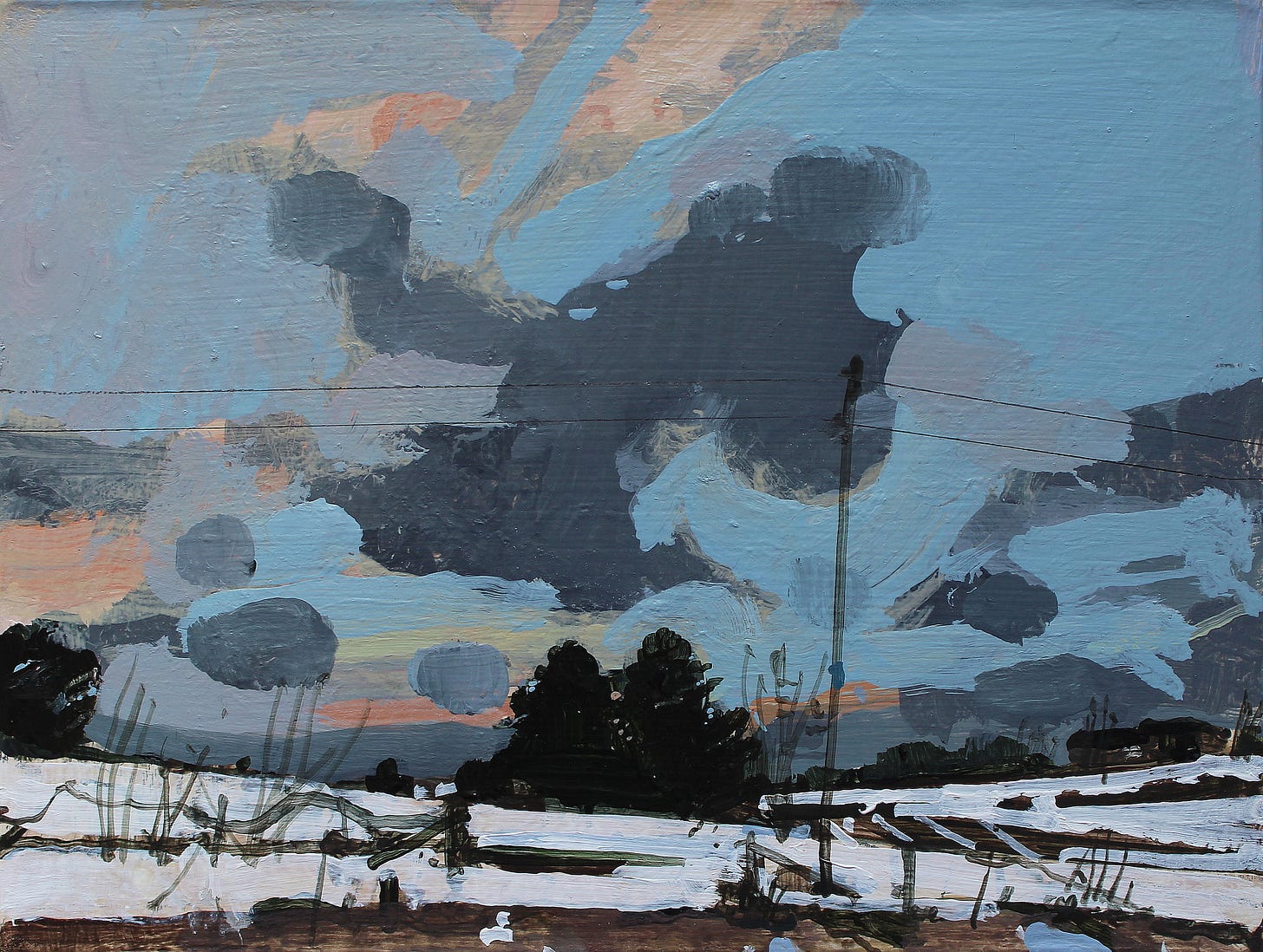
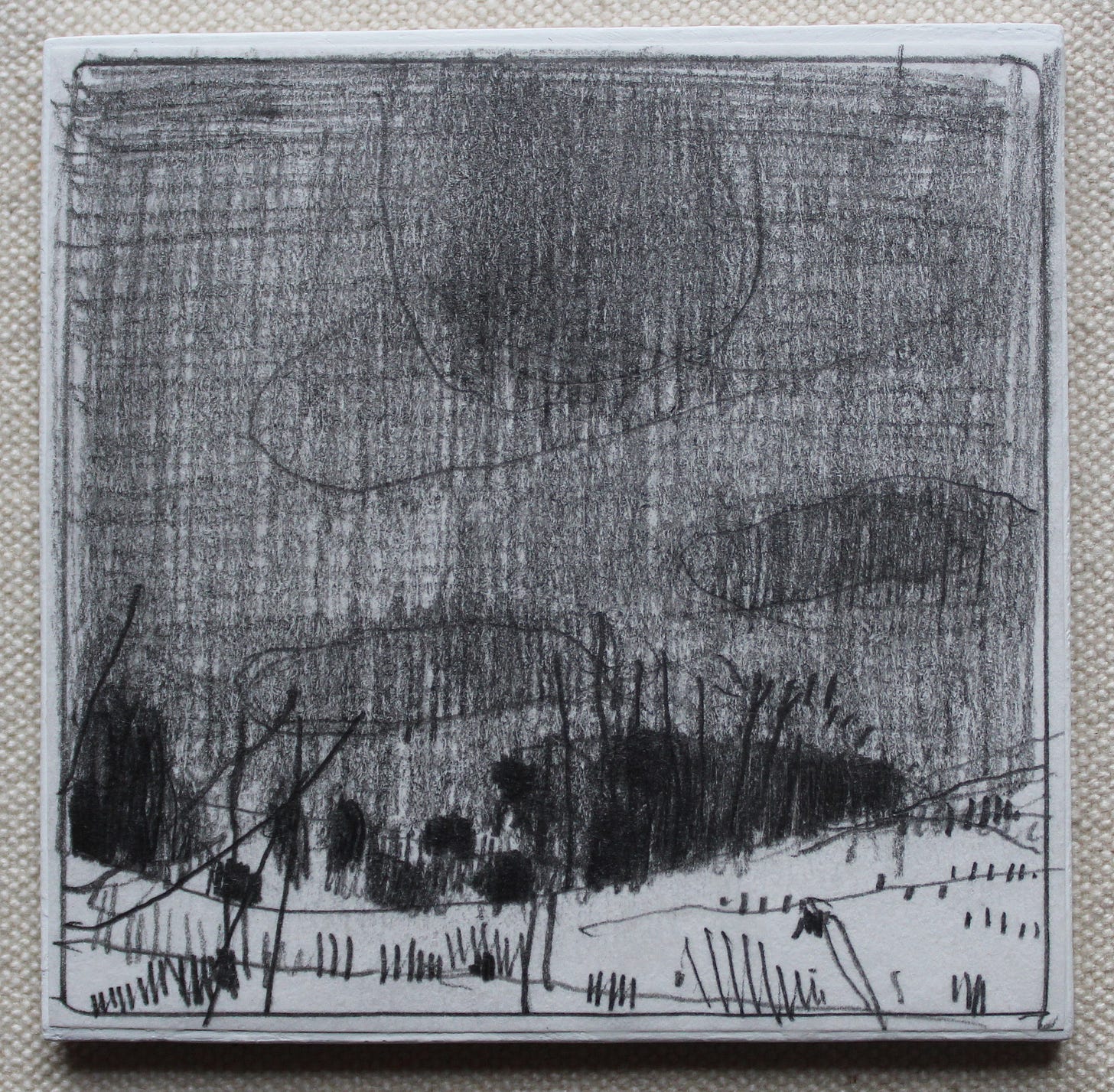
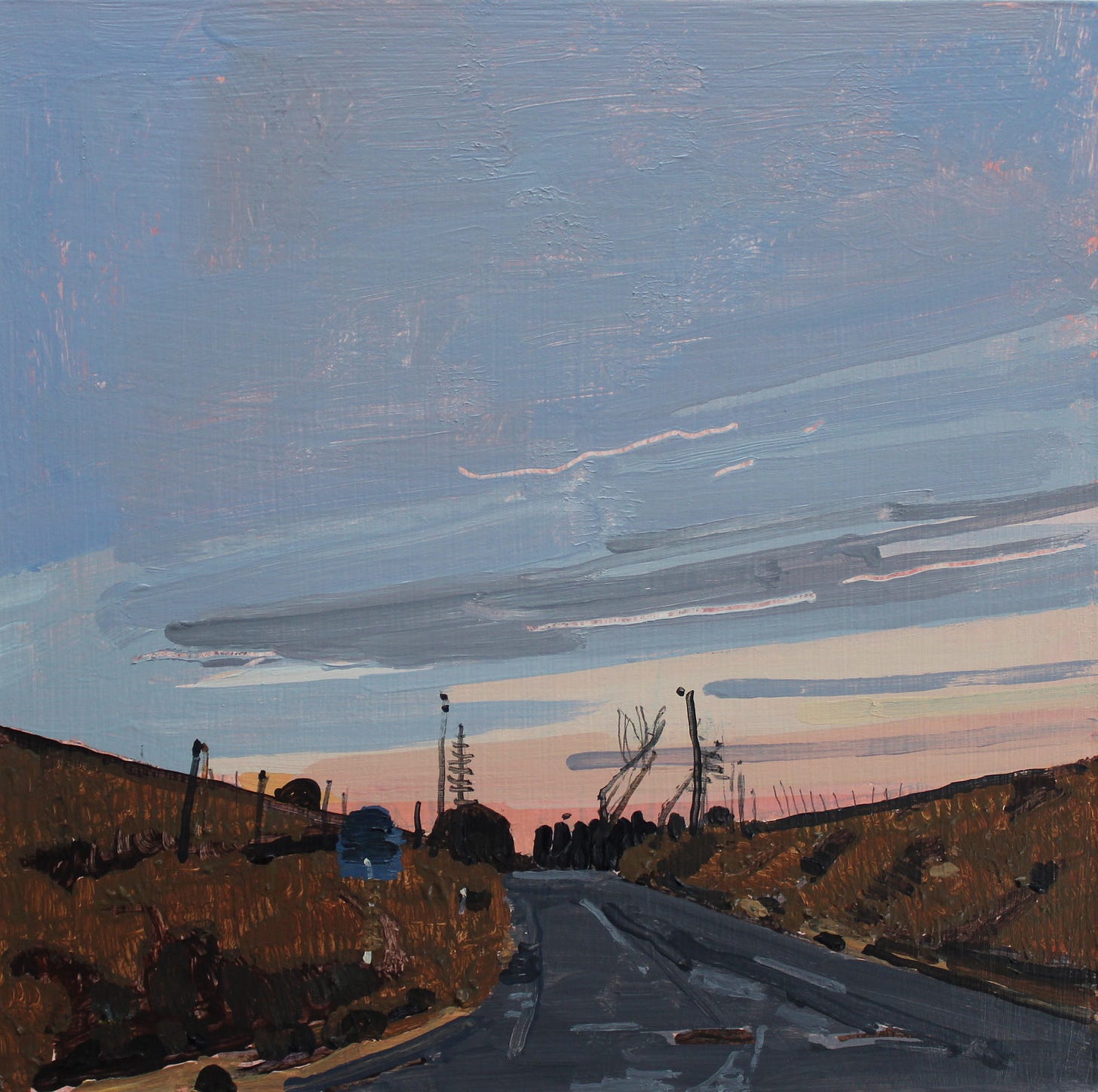
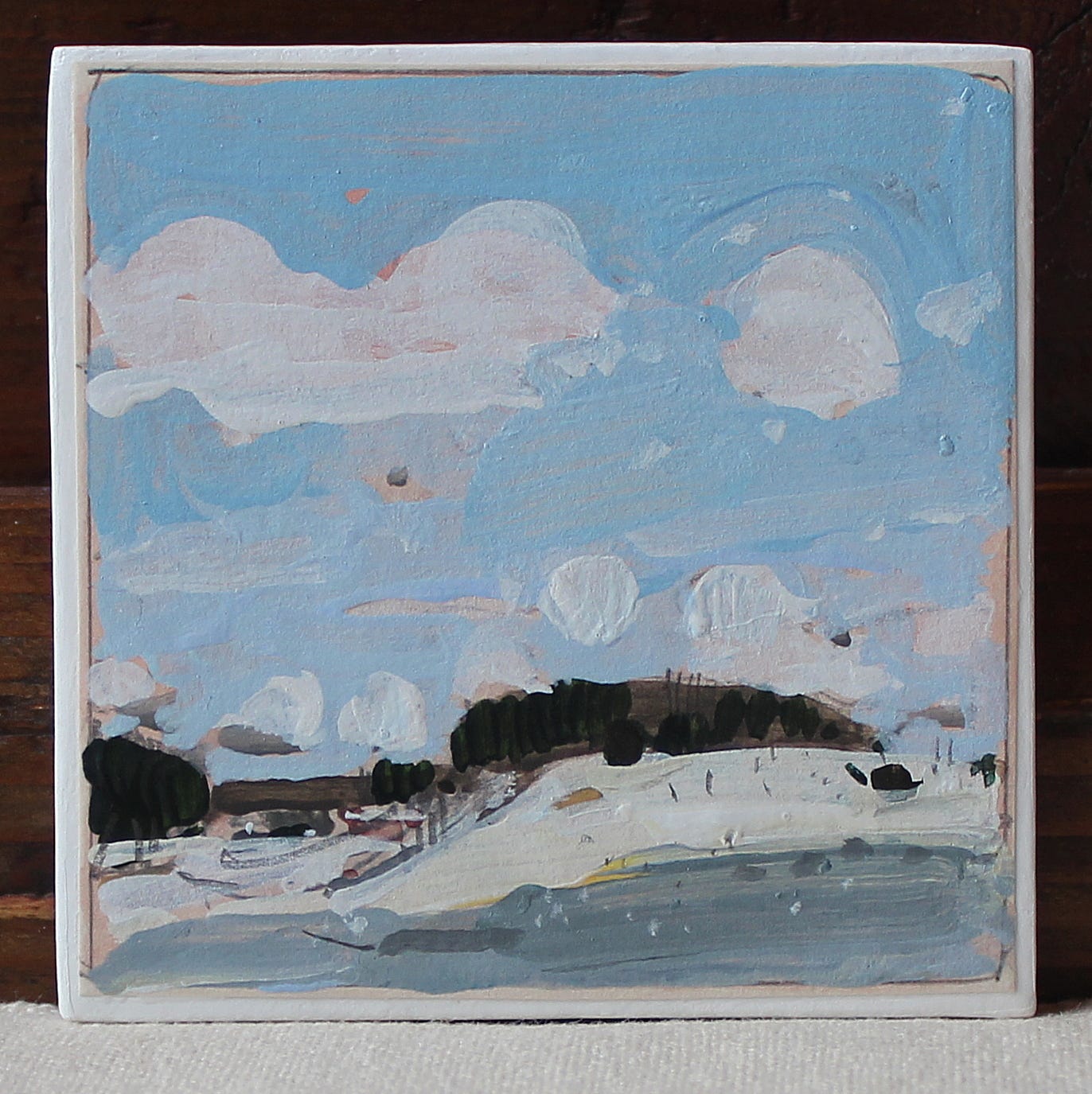

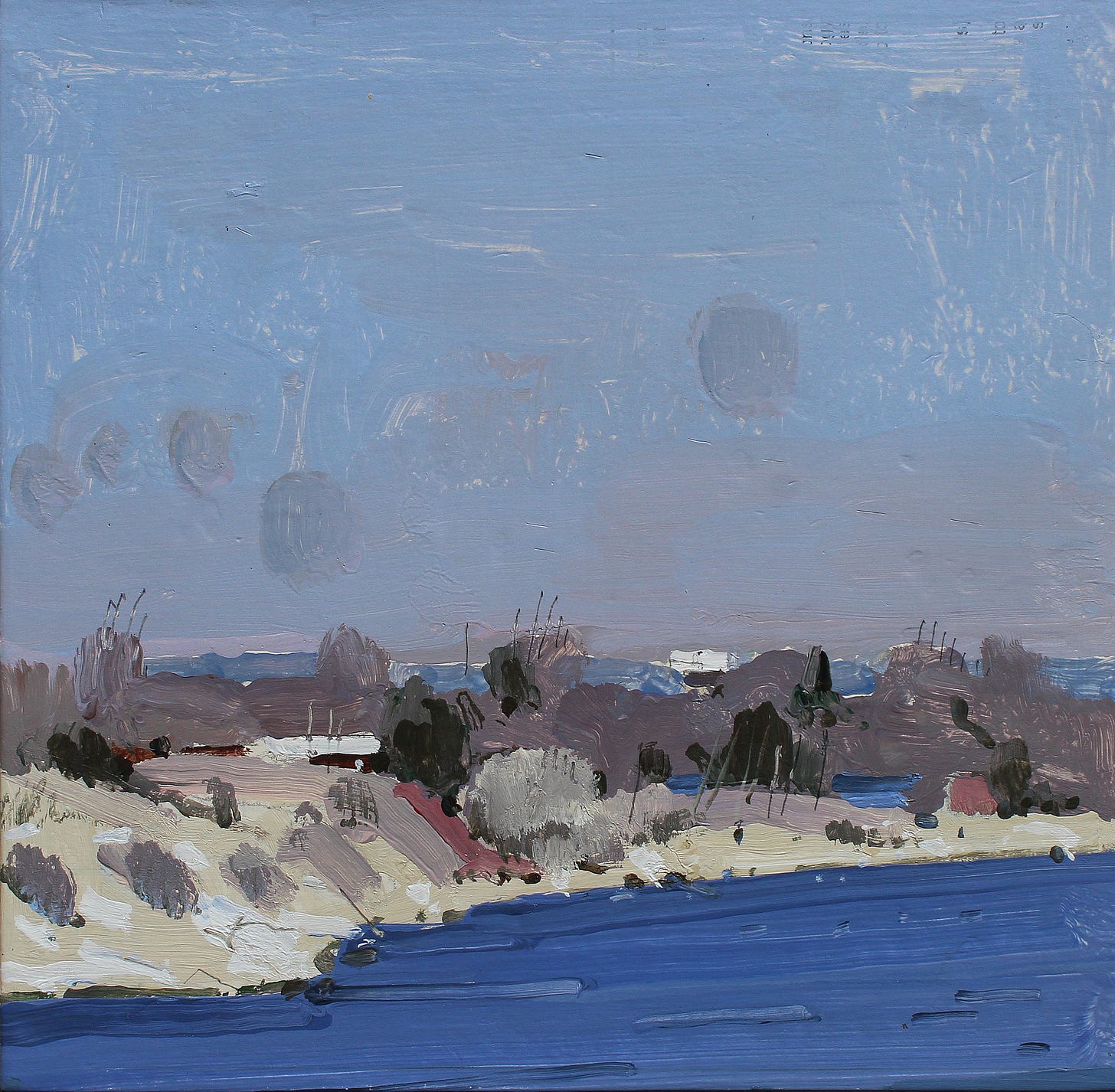
This is a brilliantly concise, yet detailed delineation of your approach to painting. It is difficult to 'think' about all of this while trying to maintain spontaneity of marks, but of course over time, much of this becomes intuitive. But not all! It's very easy to get stuck— this list of questions seems like a great way to find where edits are required. So good— thank you!
I really love this question (one I always need to watch out for) “Does it suffer from neat disease?” haha
You share your advice so generously. Much appreciated. Love your work